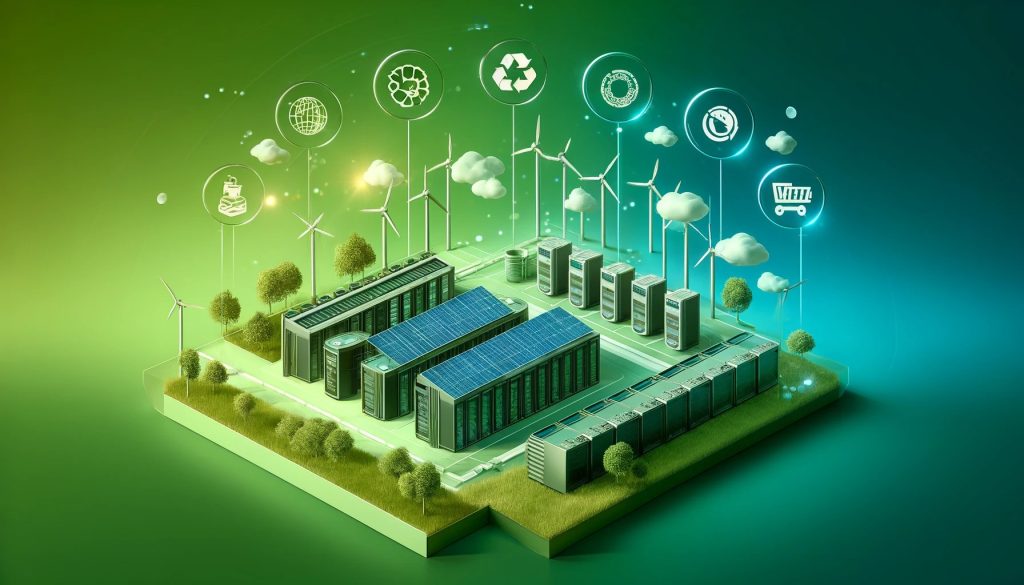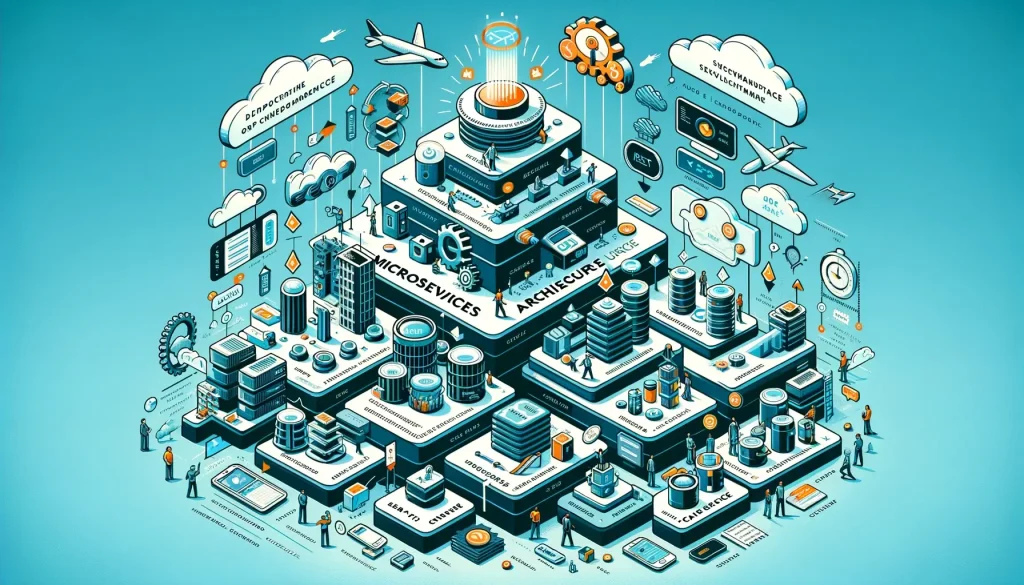Introduction
In recent years, the emphasis on sustainability has permeated various sectors, with Information Technology (IT) emerging as a crucial area for adopting eco-friendly practices. This focus on Green IT, also known as sustainable IT, involves implementing energy-efficient data centers, eco-friendly hardware, and software solutions that minimize carbon footprints. The shift towards sustainable IT is driven by growing environmental awareness, regulatory pressures, and the global pursuit of Sustainable Development Goals (SDGs). This article explores the importance of Green IT, its components, and its alignment with the United Nations Sustainable Development Goals (UN SDGs).
The Importance of Green IT
Environmental Impact
The IT industry significantly impacts the environment, contributing to energy consumption, electronic waste, and carbon emissions. Data centers, for example, consume vast amounts of electricity to power servers and maintain cooling systems. Implementing energy-efficient technologies in data centers can drastically reduce energy usage, thereby lowering carbon footprints.
Regulatory Pressures
Governments and international bodies are increasingly imposing regulations to promote sustainable practices across industries. The Corporate Sustainability Reporting Directive (CSRD) by the European Union mandates companies to report their environmental impact, driving businesses to adopt Green IT practices to comply with these regulations.
Key Components of Green IT
Energy-Efficient Data Centers
Data centers are central to IT infrastructure, hosting servers and networking equipment. Transitioning to energy-efficient data centers involves using advanced cooling technologies, energy management systems, and renewable energy sources. Companies like Google and Microsoft have pioneered the use of artificial intelligence to optimize data center energy consumption.
Eco-Friendly Hardware
Eco-friendly hardware includes devices and components designed to be energy-efficient and made from sustainable materials. This includes servers, computers, and peripherals that consume less power and have longer lifespans. Additionally, using recycled materials in manufacturing helps reduce electronic waste.
Sustainable Software Solutions
Software solutions play a crucial role in reducing the environmental impact of IT operations. Cloud computing, for instance, allows businesses to scale their computing resources efficiently, reducing the need for physical hardware. Moreover, optimizing software to run more efficiently can lead to significant energy savings.
Circular Economy in IT
The circular economy model in IT emphasizes reusing, refurbishing, and recycling electronic products. This approach reduces electronic waste and promotes the sustainable use of resources. Companies are encouraged to design products with end-of-life considerations, ensuring that materials can be easily recycled or repurposed.
Aligning Green IT with Sustainable Development Goals
SDG 7: Affordable and Clean Energy
Green IT practices contribute to SDG 7 by promoting energy efficiency and the use of renewable energy in IT operations. Energy-efficient data centers and eco-friendly hardware reduce the overall energy demand, supporting the transition to cleaner energy sources.
SDG 12: Responsible Consumption and Production
By embracing the circular economy, the IT industry can significantly impact SDG 12. Sustainable manufacturing practices, recycling, and waste reduction align with responsible consumption and production, ensuring that resources are used efficiently and sustainably.
SDG 13: Climate Action
Reducing the carbon footprint of IT operations directly supports SDG 13. Implementing Green IT practices helps mitigate climate change by lowering greenhouse gas emissions associated with energy consumption and electronic waste.
Corporate Sustainability and Reporting
Corporate Sustainability Reporting Directive (CSRD)
The CSRD requires companies to disclose their environmental, social, and governance (ESG) performance, including their sustainability practices. Adopting Green IT not only helps businesses comply with these reporting requirements but also demonstrates a commitment to sustainability, enhancing their corporate reputation.
Sustainability Goals in Business
Integrating sustainability into business operations is essential for long-term success. Companies that prioritize Green IT can achieve their sustainability goals more effectively, attracting environmentally conscious consumers and investors. Sustainable business practices also lead to cost savings and operational efficiencies.
Practical Steps for Implementing Green IT
Assessing Current IT Infrastructure
The first step towards Green IT is assessing the current IT infrastructure to identify areas for improvement. This involves evaluating energy consumption, hardware lifecycle, and software efficiency. Conducting energy audits can provide insights into potential energy-saving opportunities.
Investing in Energy-Efficient Technologies
Investing in energy-efficient technologies is crucial for reducing the environmental impact of IT operations. This includes upgrading to energy-efficient servers, implementing advanced cooling systems, and utilizing renewable energy sources. Additionally, adopting virtualization and cloud computing can optimize resource usage.
Promoting a Culture of Sustainability
Creating a culture of sustainability within the organization is essential for the success of Green IT initiatives. This involves educating employees about the importance of sustainable practices and encouraging them to adopt eco-friendly habits. Providing training and resources can empower employees to contribute to sustainability goals.
Partnering with Sustainable Suppliers
Choosing suppliers and vendors that prioritize sustainability can enhance Green IT efforts. This includes sourcing hardware from manufacturers that use sustainable materials and have robust recycling programs. Collaborating with service providers that follow green practices ensures that the entire supply chain supports sustainability.
The Role of Innovation in Green IT
Artificial Intelligence and Machine Learning
Artificial intelligence (AI) and machine learning (ML) technologies offer significant potential for optimizing IT operations. AI can analyze energy usage patterns and suggest improvements, while ML algorithms can predict maintenance needs, reducing downtime and energy consumption. Innovations in AI and ML contribute to more efficient and sustainable IT infrastructure.
Internet of Things (IoT)
The Internet of Things (IoT) enables the collection of real-time data from various devices, providing valuable insights into energy usage and system performance. IoT sensors can monitor environmental conditions in data centers, allowing for more precise control of cooling systems. Implementing IoT solutions can lead to significant energy savings and improved operational efficiency.
Future Trends in Green IT
Renewable Energy Integration
The integration of renewable energy sources, such as solar and wind, into IT operations is expected to grow. Companies are increasingly investing in on-site renewable energy generation and purchasing renewable energy credits to offset their carbon footprints. This trend supports the transition to a more sustainable energy landscape.
Advanced Cooling Technologies
Innovations in cooling technologies, such as liquid cooling and immersion cooling, are set to revolutionize data center energy efficiency. These technologies offer superior cooling performance while consuming less energy compared to traditional air-cooling methods. As these technologies mature, they will play a vital role in achieving greener data centers.
Sustainable Packaging and Products
The demand for sustainable packaging and products is on the rise, driven by consumer awareness and regulatory requirements. IT companies are adopting eco-friendly packaging materials and designing products with recyclability in mind. This trend aligns with broader sustainability goals and helps reduce the environmental impact of IT hardware.
Conclusion
Green IT and sustainability are no longer optional but essential components of modern IT practices. As environmental awareness and regulatory pressures increase, businesses must adopt sustainable IT practices to reduce their carbon footprints and contribute to global sustainability goals. By embracing energy-efficient technologies, eco-friendly hardware, sustainable software solutions, and the circular economy, the IT industry can play a pivotal role in achieving the United Nations Sustainable Development Goals. Furthermore, innovation and a commitment to sustainability in business operations will drive the transition towards a greener and more sustainable future.
Best article of Owasoft Technologies
Microservices architecturefor Scalable Mobile App Development




